Gran Canaria Estadio (La Nube)
| Capacity | 44 484 |
|---|---|
| Country | Spain |
| City | Las Palmas |
| Clubs | UD Las Palmas |
| Category | Design awaiting implementation |
| Cost | €101.2 M ($104.5 M) |
| Construction | ? |
| Design | L35 Arquitectos |
Advertisement
Gran Canaria Estadio (La Nube) – design description
What does the Estadio Gran Canaria expansion project look like in a nutshell?
Plans for the expansion of Estadio Gran Canaria were created to join the initiative to host the 2030 World Cup. The idea turned out to be a hit: Spain became the (co)host of the tournament, and the stadium from the Canary Islands was among the venues designated for the event.
The facility will be given a more coherent, enclosed form, approaching modern stadiums with a football-specific profile. This is intended to correct the “mistake” that some consider the abandonment of the former Estadio Insular following the creation of the Estadio Gran Canaria, and will complete the changes initiated with the first redevelopment in 2014–2016.
The expansion will increase the venue's capacity to 44,484 spectators, and the auditorium will be fully covered. A major innovation will be a new panoramic screen. The roof, together with the elegant facade, will form an original, light-colored envelope that will cover the entire stadium and tie in with the theme given to the entire concept, “La Nube” (the cloud).
How did the Estadio Gran Canaria expansion project come about?
How does the Estadio Gran Canaria look like?
Estadio Gran Canaria opened in 2003 as the largest stadium in the Canary Islands. The facility originally had an athletics track, but after the 2014–2016 reconstruction, it was removed and the stands were brought closer to the pitch.
When were the first plans to expand Estadio Gran Canaria conceived?
In the summer of 2022, there were reports of plans for another redevelopment of the stadium to join the initiative to host the 2030 World Cup. The modernization was intended to be carried out by the local authority (Cabildo Insular de Gran Canaria), which owned the venue.
As recently as July 2022, the Spanish Football Federation placed the stadium on a broad list of 15 arenas tentatively selected to host the World Cup (should it receive the rights to host it). Ultimately, the list was to be shortened to 11 stadiums.
A preliminary design for the Estadio Gran Canaria expansion was presented in May 2023.
Will the Estadio Gran Canaria host the 2030 World Cup matches?
On October 4, 2023, FIFA announced the awarding of the 2030 World Cup to Spain (along with Morocco and Portugal, as well as three South American countries, which are to host only one game each at the start of the tournament: Argentina, Uruguay and Paraguay).
The prospect of bringing the World Cup to the Canary Islands (for the first time ever) thus became very real, and everything depended primarily on whether the Estadio Gran Canaria would be adapted to World Cup standards.
In June 2024, local authorities approved the allocation of €101.18 million for the stadium expansion, plus an additional €5.8 million for project development.
The measures taken by local politicians were successful, and Estadio Gran Canaria was among 11 venues from Spain to be published in the July 2024 World Cup “bid book”. The choice of the Las Palmas-based stadium was also confirmed in December 2024, when FIFA finally approved Spain, Portugal and Morocco to host the event.
Estadio Gran Canaria is tentatively scheduled to host matches up to the quarterfinal stage during the 2030 World Cup.
When was the new Estadio Gran Canaria expansion project conceived?
Instead of implementing the design unveiled in May 2023, the authorities held an architectural competition for a new concept, which was entered by a number of renowned studios from around the world.
In October 2024, nine teams of architects were selected and qualified for the final phase of the competition. This group included IDOM, Estudio Lamela and Ayesa, among others.
The selection of the winning concept was announced on February 7, 2024. It was designed by the L35 Arquitectos, known for example for its work on the design of the recent Estadio Santiago Bernabéu expansion.
When will the Estadio Gran Canaria be expanded?
After the first concept was presented, reports indicated the redevelopment would begin in mid-2025 and be completed within two years.
After the presentation of the new design, work is said to begin in late 2025 (before that, full design documentation is to be prepared, which is expected to take six months). No completion date has yet been given, but it is expected to be “well before” the deadline set by FIFA (June 2029).
How much is the Estadio Gran Canaria expansion expected to cost?
The local government's June 2024 allocation of €101.18 million is expected to be sufficient for the reconstruction. An additional €5.7 million would cost to prepare the design.
What does the Estadio Gran Canaria expansion concept entail?
The project involves rebuilding the stands behind the goals so that they are brought closer to the pitch. The northern curve (Grada Naciente), which has been the lowest so far, will become equal in height to the neighboring stands, while the southern stand (Curva) will grow even taller, as it will receive an additional upper floor with a curved contour.
A modest floor with VIP seating will also be added to the east stand. The expansion of the stands will increase the capacity of the entire stadium to 44,484 spectators.
Another radical change will be a new canopy that will fully cover the stands. The roof, together with the finely wavy facade, will form a huge, bright shell, covering the whole building and referring to the leitmotif given to the whole concept, namely “La Nube” (the cloud).
The facade will be made of translucent ETFE material, and underneath the shell will be nets to capture moisture from the air. In pursuit of sustainability, the facility is expected to use solar, wind and geothermal energy.
A panoramic video screen located at the edge of the roof will also be a significant innovation. New locker rooms will also be built at the stadium.
The plan also calls for increasing the venue's commercial potential. Among other things, the stadium will house new stores, bars and restaurants, conference rooms, and the UD Las Palmas club museum. Premium seating and hospitality areas will be significantly expanded.
The stadium is naturally intended to serve the UD Las Palmas, but its function will go beyond a football arena: it is expected to attract concerts by music stars and become a key center of the island of Gran Canaria in terms of sports, culture and business.
Advertisement
Renderings
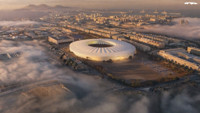
2025 © L35 Arquitectos 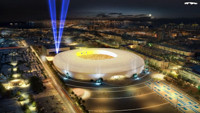
2025 © L35 Arquitectos 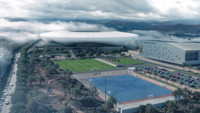
2025 © L35 Arquitectos 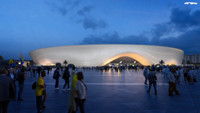
2025 © L35 Arquitectos 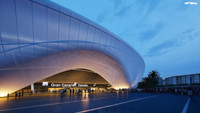
2025 © L35 Arquitectos 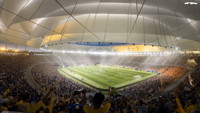
2025 © L35 Arquitectos
Related news
2025
-
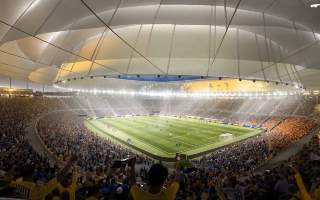
Spain: UD Las Palmas may leave Estadio Gran Canaria during World Cup works
Preparations for the FIFA World Cup 2030 will force the modernization of Gran Canaria Stadium. As a result, the yellow-and-blues may be forced to play at another venue, and the island’s authorities are considering several contingency scenarios.
-
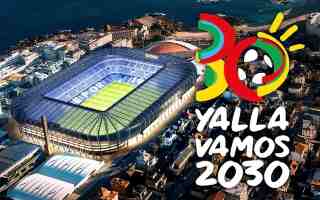
Spain: Riazor World Cup project on the brink of collapse
No funding, no project, not even an agreement among politicians and the club. With less than 5 years to go before the World Cup, Estadio Riazor project has stalled, and A Coruña's bid is being questioned more than ever. Despite this, the authorities are ignoring the opposition's questions and appeals.
-
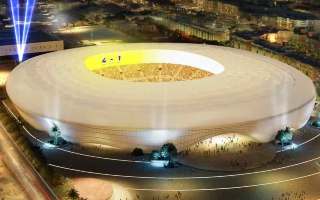
Spain: Gran Canaria to start stadium modernization ahead of 2030 World Cup
One of the most significant renovations in the history of Estadio de Gran Canaria is about to begin. The island’s authorities have announced a tender for the demolition of the eastern tower – the first stage of works that will transform the venue into a modern stadium meeting FIFA requirements ahead of the World Cup.
-

Spain: Mysterious signs appear at Las Palmas stadium
UD Las Palmas fans have noticed the appearance of mysterious signs in a number of areas of Estadio Gran Canaria in recent weeks. Although they look worrying, an architect reassures: this is preparation for the use of modern technology at the Canarian venue.
-

Spain: Gran Canaria has chosen - a “cloud” stadium will be built on the island
White, irregular and towering over the urban landscape. That's the winning design called "cloud" that will turn the Estadio Gran Canaria into an arena worthy of the World Cup and Primera Division. The company responsible for the concept is the same one that designed the new Bernabeu.

 StadiumDB
StadiumDB